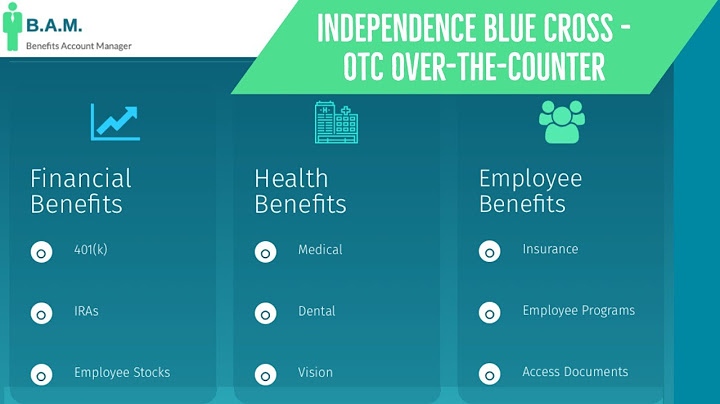Streptococcal Infections (Invasive Group B Strep)What is Group B Strepotococcus?Group B streptococci (also known as Steptococcus Agalactiae ) are bacteria that may be found in the genitourinary tract and/or the gastrointestinal tract of humans. Most people are unaware that they have the bacteria because they usually cause no symptoms. Occasionally, however, these bacteria can cause urinary tract infections and endometritis (infection of the uterus) and even life-threatening diseases such as meningitis and endocarditis (infection of the heart valves). In 2001, there were 349 cases reported among New York City residents (rate of 4.4 cases per 100,000 person). Show
Who gets Group B streptococcus disease?Infants may get severe forms of Group B streptococcus disease, including meningitis (infection of the brain) and bacteremia (infection in the blood), transmitted through the birthing process. Adults with factors predisposing them to infections (like diabetes, liver disease, and malignancy) are more likely to have the severe Group B streptococcus disease like bacteremia, pneumonia, and soft tissue or wound infections. Group B streptococcus may also cause urinary tract infections and endometritis (infection of the uterus) after childbirth in otherwise health women. How common is Group B streptococcus disease?Group B Streptococcus has been found in the genitourinary or gastrointestinal tract cultures of 5% to 40% of women. Most of these women had no symptoms to indicate they had group B streptococcus. The rate of serious infections in infants is 0.3. to 0.7 per 1000 live births in the United States. It is estimated that 4.4 per 100,000 non-pregnant adults per year develop serious Group B streptococcus infection. Many of the non-pregnant adults with a serious Group B streptococcus disease have a predisposing illness. How are group B streptococci spread?An infant may become infected by passing through the birth canal of a woman with symptomatic or asymptomatic GBS. In adults, the gastrointestinal tract appears to be the major reservoir of Group B streptococcus infection, with frequent spread to the genitourinary tract. Why does Group B streptococcus disease occur?Group B streptococcus disease occurs when the bacteria gets past a person's immune system defenses. Health conditions that decrease a person's immunity to infection also make invasive disease more likely (i.e., diabetes, liver disease, malignancy). Who is most at risk for Group B streptococcus disease?Infants born to mothers who have asymptomatic or symptomatic Group B streptococcus are at risk for serious disease. Although healthy adults can get Group B streptococcus disease, people with predisposing conditions like diabetes, liver disease, and malignancy are at higher risk. What are the early signs and symptoms of Group B streptococcal disease?In infants, early signs and symptoms of serious Group B streptococcal disease may be difficulty breathing, poor feeding, lethargy, or abnormal temperature. In adults, the symptoms will depend on the part of the body infected. What can be done to prevent Group B streptococcal disease in infants?Women can be tested during pregnancy to see if they have Group B streptococcus. If the test is positive for the bacteria, or if the mother had a previous baby with Group B streptococcus disease, or had Group B streptococcus in her urine sometime during the pregnancy, the mother should be treated with antibiotics during delivery to prevent her baby from getting ill. Prevention of Group B streptococcus in infants is one of many reasons why all pregnant women should seek prenatal care. Can Group B Streptococcal disease be treated?Group B streptococcal disease in infants and adults can be treated with antibiotics, usually an antibiotic from the penicillin family. Alternative antibiotics exist for patients with penicillin allergies. Should close contacts of individuals with Group B streptococcus disease be tested and treated?No. The development of Group B streptococcal disease is not thought to be dependent on person-to-person transmission, except for neonatal transmission. Therefore, testing and treatment of close contacts is not recommended. Last updated: March 2003 What is a group B strep test?Strep B, also known as group B strep (GBS), is a type of bacteria commonly found in the digestive tract, urinary tract, and genital area. It rarely causes symptoms or problems in adults but can be deadly to newborns. In women, GBS is mostly found in the vagina and rectum. So a pregnant woman who is infected can pass the bacteria to her baby during labor and delivery. GBS can cause pneumonia, meningitis, and other serious illnesses in a baby. GBS infections are the leading cause of death and disability in newborns. A group B strep test checks for GBS bacteria. If the test shows that a pregnant woman has GBS, she can take antibiotics during labor to protect her baby from infection. Other names: group B streptococcus, group B beta-hemolytic streptococcus, streptococcus agalactiae, beta-hemolytic strep culture What is it used for?A group B strep test is most often used to look for GBS bacteria in pregnant women. Most pregnant women are tested as part of routine prenatal screening. It may also be used to test infants who show signs of infection. Why do I need a group B strep test?You may need a strep B test if you are pregnant. The American College of Obstetricians and Gynecologists recommends GBS testing for all pregnant women. Testing is usually done in the 36th or 37th week of pregnancy. If you go into labor earlier than 36 weeks, you may be tested at that time. A baby may need a group B strep test if he or she has symptoms of infection. These include:
What happens during a group B strep test?If you are pregnant, your health care provider may order a swab test or a urine test. For a swab test, you will lie on your back on an exam table. Your health care provider will use a small cotton swab to take a sample of cells and fluids from your vagina and rectum. For a urine test, you will most likely be told to use the "clean catch method" to ensure your sample is sterile. It includes the following steps.
If your baby needs testing, a provider may do a blood test or a spinal tap. For a blood test, a health care professional will use a small needle to take a blood sample from your baby's heel. After the needle is inserted, a small amount of blood will be collected into a test tube or vial. Your baby may feel a little sting when the needle goes in or out. A spinal tap, also known as a lumbar puncture, is a test that collects and looks at spinal fluid, the clear liquid that surrounds the brain and spinal cord. During the procedure:
Will I need to do anything to prepare for the test?You don't any special preparations for group B strep tests. Are there any risks to the test?There is no risk to you from a swab or urine test. Your baby may have slight pain or bruising after a blood test, but that should go away quickly. Your baby will likely feel some pain after a spinal tap, but that shouldn't last too long. There is also a small risk of infection or bleeding after a spinal tap. What do the results mean?If you are pregnant and results show you have GBS bacteria, you will be given antibiotics intravenously (directly to your veins) during labor, at least four hours before delivery. This will prevent you from passing the bacteria to your baby. Taking antibiotics earlier in your pregnancy is not effective, because the bacteria can grow back very quickly. It's also more effective to take antibiotics through your vein, rather than by mouth. You may not need antibiotics if you are having a planned delivery by Cesarean section (C-section). During a C-section, a baby is delivered through the mother's abdomen rather than vaginally. But you still should be tested during pregnancy because you may go into labor before your scheduled C-section. If your baby's results show a GBS infection, he or she will be treated with antibiotics. If your provider suspects a GBS infection, he or she may treat your baby before test results are available. This is because GBS can cause serious illness or death. If you have questions about your results or your baby's results, talk to your health care provider. Learn more about laboratory tests, reference ranges, and understanding results. Is there anything else I need to know about a group B strep test?Strep B is one type of strep bacteria. Other forms of strep cause different types of infections. These include strep A, which causes strep throat, and streptococcus pneumoniae, which causes the most common type of pneumonia. Streptococcus pneumonia bacteria can also cause infections of the ear, sinuses, and bloodstream. References
What is beta hemolytic streptococcus group B in urine?What is Group B Streptococcus (GBS)? GBS is a bacteria that is found in the bowel, genital tract, urinary tract, throat, or respiratory tract of some adults. Many people carry GBS in their bodies but do not become ill. GBS can cause mild disease in adults, such as urinary tract infections (bladder infections).
How did I get strep B in my urine?Group B Strep found in the urine does not always mean an infection is present, particularly when the level of the bacteria detected is low. Sometimes it is just that the urine has picked up some GBS from vaginal or rectal carriage on its way out of the body.
Do you need antibiotics for group B strep in urine?If GBS grows from the urine culture, this infection should be treated with an oral antibiotic, but you should also receive an IV antibiotic during labor. (See 'Group B strep prevention' below.)
Do you treat beta hemolytic strep in urine?If GBS or other bacteria appear in your urine, your provider may give you antibiotics to clear up the infection. You will likely have a GBS genital culture done between weeks 36 and 38 of your pregnancy. If your test is positive, you may be treated with antibiotics to get rid of the infection.
|

Advertising
LATEST NEWS
Advertising
Populer
Advertising
About

Copyright © 2024 chuyencu Inc.













